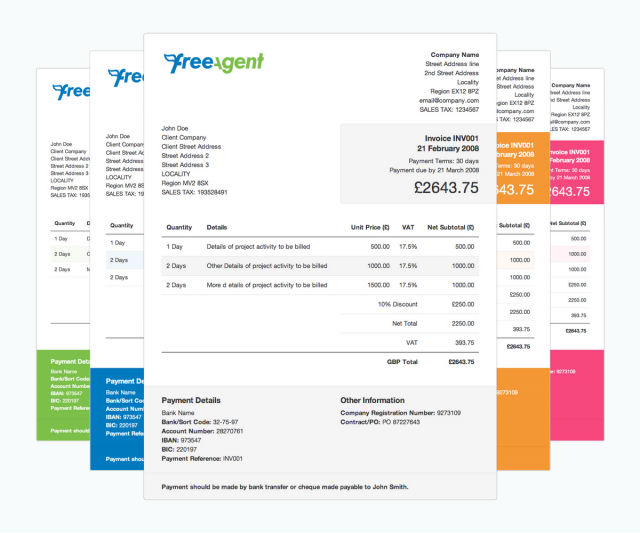If you’re a business owner, I’m sure you've waited by the mailbox many an afternoon praying for that check to show up from a late paying customer. Being a cash strapped business is no fun, and today we going to walk you through the Ignite Spot Invoicing System so that you can get things organized and get paid faster.
This article is hands on. As you read it, make the changes in your business.
The 5 Areas of a Fool Proof Invoicing System
This isn't hard to do, you just need to take the time to do it. Below, you'll find the 5 areas of your business that need some love and attention if you're going to get paid quicker by your customers.
1. Capturing Time & Expense for Approval
You need a software to track your time on a job and the expenses that you incur. Most business owners track this stuff in their head, in a notebook or on a Google Excel document. Why do you need a software? As your company grows, you need a solution that can scale with you and feed you necessary reports. Your role should be to get these reports each week, review them for a few minutes and then approve them. Your bookkeeper or project manager can create the invoices after that. Besides, having a software will keep you far more organized and on top of your invoicing system.
Here are a few of the invoicing systems we like:
HARVEST: The pricing is reasonable and they have a great online and mobile application.
BILL4TIME: This platform has tons of great features and makes it really easy to stay organized.
We love how you can invoice your customers from both of these platforms. They also integrate with QuickBooks making life a lot easier!
2. Invoice Creation
Once you have everything in place, you’re off to the races. If you run one of the platforms above, you can use their invoicing templates to design your layout. Make sure that your invoice has everything you customer is going to need in order to get you paid on time. It always helps to have the following on an invoice:
- Date of service
- Contact information
- Description of services rendered
- Due date
- Directions on how to pay properly
- Sub-totals and totals
- Eye-catching layout with logo, etc.
I’m not lying when I tell you that I’ve seen some of the world’s best and worst invoices.
If your current invoices look like this, you're in trouble:
You need an invoice template that is clean, easy to read and has clear instructions on it. Shoot for something like this:
Once you have your template down pact, you need to create a time each week that's cemented into your calendar for invoicing. If you’re a one-man show, you’ll be doing the invoices for now. If you have help, your staff can do it but make sure you review them before they go out.
A lot of companies invoice “whenever they get a chance”. That's is a sure-fire way to run low on cash in your company. If your customers don’t know when to expect their invoice, they won’t plan on paying you routinely. In fact, you’ll get put off until their next payment cycle. Ouch!
3. Invoice Delivery
Decide how you’re going to get your invoices to your clients and stick with it. If it’s going to be by mail fine. Email is great too. However you do it, make sure that there's a set calendar date once a week to ensure that all invoices have been sent. No excuses.
4. Monitoring Receivables
This is where a lot of businesses trip up. Most companies are pretty good at getting some sort of invoice out the door, but they fail to monitor their total receivables. Whether you invoice out of Harvest, Bill4Time or QuickBooks, each of those invoicing systems have a report of all open invoices by customer. You need to print that report off once a week and review it with your team.
Keeping tabs on who is paying and who is not gives you the upper hand. If a company is 30 days past due, it's usually a smart business decision to suspend services until their bill is paid. We have seen too many businesses get taken advantage of because they gave their customers too much leeway on when they could pay.
A lot of businesses don’t want to offend their customers with a policy like this, but quite the opposite is true. When your customers see that you take your business and the service you provide seriously, they will respect you. You will get paid ahead of their other vendors who are still wallowing in the world of unorganized invoicing tactics.
5. Collecting Against Invoices
Once a customer does goes past the dreaded 30 days overdue, what do you do? Create a policy right now that stays on top of this situation. We recommend the following:
- Assign a specific person in your company to manage collections.
- All customers 30 days over due will get a call by your collections manager to discuss a payment plan within the next week.
- All customers that still have not paid within 1 week of the collection call will have service suspended until the bill is brought current.
- Stay polite and helpful throughout the entire process. Your goal is not to make their lives miserable, but to show that you want your relationship to be successful.
So there you have it. It’s only 5 steps and you can get it setup in one afternoon. Just imagine what spending 2 – 3 hours on this will do for your company in the long run.
Want to Read Other Articles Like This One?
Don't forget to subscribe to our blog and get posts like this one delivered to your inbox each week or month.

















.png)


